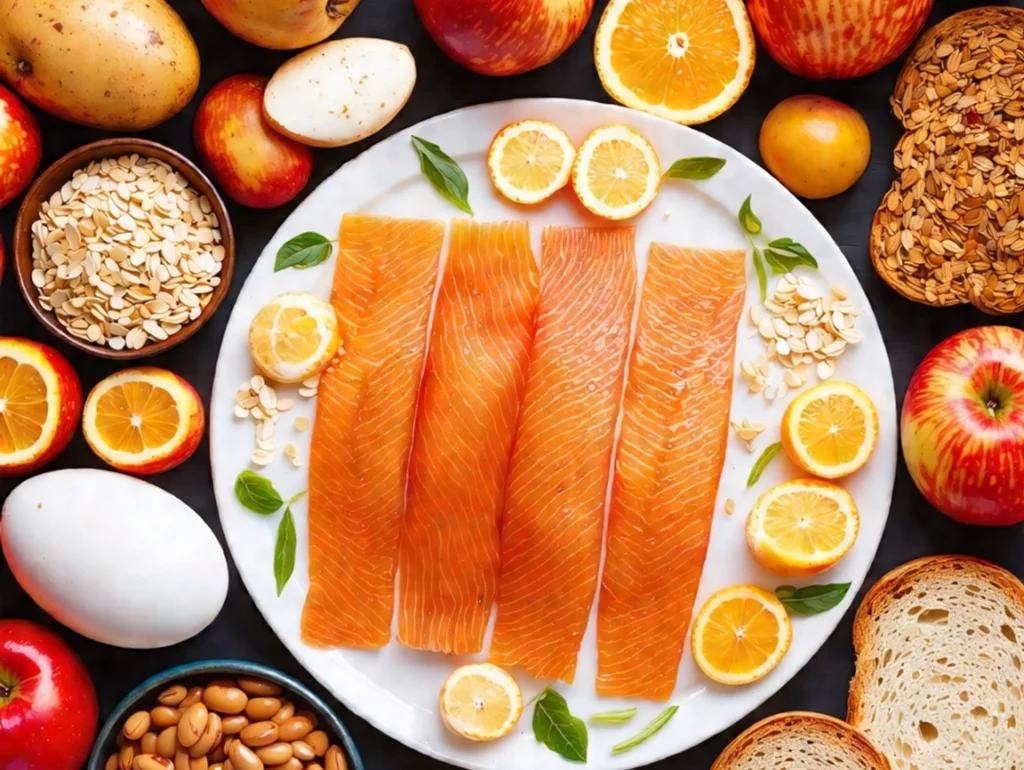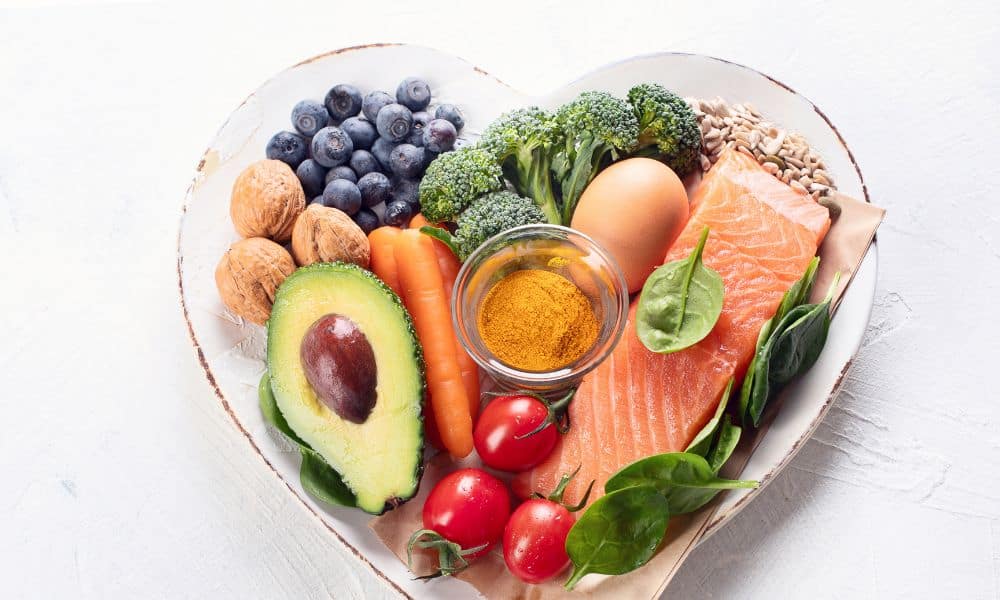One of the biggest challenges in any health and fitness journey is managing hunger. Overeating can prevent fat loss, while constant hunger can make it difficult to maintain a calorie deficit. This is where the satiety index comes in. The satiety index ranks foods based on how full they keep you after eating. Choosing the most satiating foods can help control hunger, making it easier to reach your fitness goals—whether you want to lose weight or build muscle.
What Is the Satiety Index?
The satiety index was developed in 1995 by Dr. Susanna Holt to measure how different foods affect fullness and hunger. In her study, participants ate 240-calorie portions of 38 different foods, and their feelings of fullness were measured for two hours after eating. Each food was given a satiety score, with white bread set as the baseline (100%). Foods scoring above 100% were more filling than white bread, while those below were less filling.
Why Is the Satiety Index Important for Weight Loss and Muscle Gain?
- For weight loss: Eating high-satiety foods helps control hunger while staying in a calorie deficit.
- For muscle gain: Satiating foods with high protein and complex carbs provide sustained energy and muscle recovery without unnecessary fat gain.
- For long-term success: Hunger management reduces cravings and binge eating, helping you stay on track.
Now, let’s explore the most satiating foods ranked by the satiety index.
What Are the Most Satiating Foods?
Here are the top foods that rank highest on the satiety index.
1. Boiled Potatoes (323%) – The #1 Most Satiating Food
Potatoes have the highest satiety score of all tested foods. Their combination of fiber, resistant starch, and water content makes them incredibly filling.
- Why they work: Slow-digesting carbs and fiber help keep you full.
- Best way to eat them: Boil or bake them with minimal added fat. Avoid frying, which increases calorie density.
2. Fish (225%)
Fish like cod, salmon, and tuna are rich in high-quality protein and omega-3 fatty acids, which help regulate hunger hormones.
- Why they work: High protein content increases fullness and boosts metabolism.
- Best way to eat them: Grill, bake, or steam fish for maximum benefits.
3. Oatmeal (209%)
Oats are a high-fiber, slow-digesting carbohydrate that provides long-lasting energy and fullness.
- Why they work: High in beta-glucan fiber, which slows digestion and stabilizes blood sugar.
- Best way to eat them: Prepare with water or milk, and add protein sources like Greek yogurt or nuts.
4. Oranges (202%)
Oranges and other citrus fruits have high water and fiber content, making them more filling than other fruits.
- Why they work: High water volume and fiber slow digestion.
- Best way to eat them: Eat whole oranges rather than drinking juice, which lacks fiber.
5. Apples (197%)
Apples provide fiber and a slow release of natural sugars, keeping energy levels stable.
- Why they work: High fiber content increases chewing time and delays digestion.
- Best way to eat them: Eat whole apples with the skin to maximize fiber intake.
6. Lean Meats (176%)
Chicken breast, turkey, and lean beef are packed with protein, which is the most satiating macronutrient.
- Why they work: Protein stimulates fullness hormones like GLP-1 and PYY.
- Best way to eat them: Grill, bake, or stir-fry with vegetables for a balanced meal.
7. Eggs (150%)
Eggs provide a perfect balance of protein and healthy fats, helping you feel full for longer.
- Why they work: Protein and fat slow digestion, stabilizing hunger hormones.
- Best way to eat them: Scrambled, boiled, or poached without excessive added fats.
8. Beans and Lentils (133%)
Legumes like black beans, lentils, and chickpeas are fiber-rich and a great plant-based protein source.
- Why they work: The combination of fiber and protein keeps digestion slow.
- Best way to eat them: Add to soups, salads, or grain bowls.
9. Cottage Cheese (138%)
Cottage cheese is a high-protein dairy food that keeps hunger in check while supporting muscle recovery.
- Why it works: Rich in casein protein, which digests slowly.
- Best way to eat it: Mix with fruit or nuts for a balanced snack.
10. Whole-Grain Bread (157%)
Unlike white bread, whole-grain bread has fiber and protein that improve satiety.
- Why it works: High in fiber and complex carbs for sustained energy.
- Best way to eat it: Choose 100% whole grain or sprouted bread with protein toppings.
How Can You Use the Satiety Index to Reach Fitness Goals Faster?
Now that you know the most satiating foods, here’s how to apply this knowledge.
For Weight Loss
- Prioritize high-satiety, low-calorie foods like boiled potatoes, fish, and oatmeal to naturally reduce calorie intake.
- Replace processed snacks with high-fiber fruits like oranges and apples to control hunger.
- Focus on lean proteins and legumes to maintain muscle while losing fat.
For Muscle Building
- Use high-satiety proteins like eggs, lean meat, and cottage cheese to fuel muscle recovery without excess fat gain.
- Combine complex carbs like oats, beans, and whole grains with protein for sustained energy.
- Add healthy fats from fish and nuts to support hormonal balance and satiety.
For Long-Term Success
- Eat whole, minimally processed foods to maximize satiety and prevent cravings.
- Drink enough water, as dehydration can be mistaken for hunger.
- Avoid low-satiety foods like sugary cereals, white bread, and processed snacks.
Key Takeaways
- The satiety index ranks foods based on how filling they are.
- Boiled potatoes, fish, and oatmeal are among the most satiating foods, making them great for weight loss and muscle gain.
- High-protein, high-fiber foods reduce cravings and overeating, helping you stay consistent with your fitness goals.
- Using the satiety index helps control hunger naturally, making it easier to maintain a healthy diet.
By incorporating the most satiating foods into your diet, you can manage hunger, prevent cravings, and stay on track with your health and fitness journey.
Read Next…
- The Most Satiating Foods and How the Satiety Index Accelerates Your Health and Fitness Journey
- How to Prevent Hunger, Cravings, Lack of Motivation, Bad Habits, and Toxic Relationships from Destroying Your Health and Fitness Journey
- Harness Your Metabolism for a 90-Day Transformation
- 10 Things That Prevent You From Staying Consistent on a Health and Fitness Journey
- What to Expect When You Do a Check-In With a Health Coach
External Sources
- The Satiety Index of Common Foods – National Center for Biotechnology Information
- High-Satiety Foods for Weight Management – National Center for Biotechnology Information




